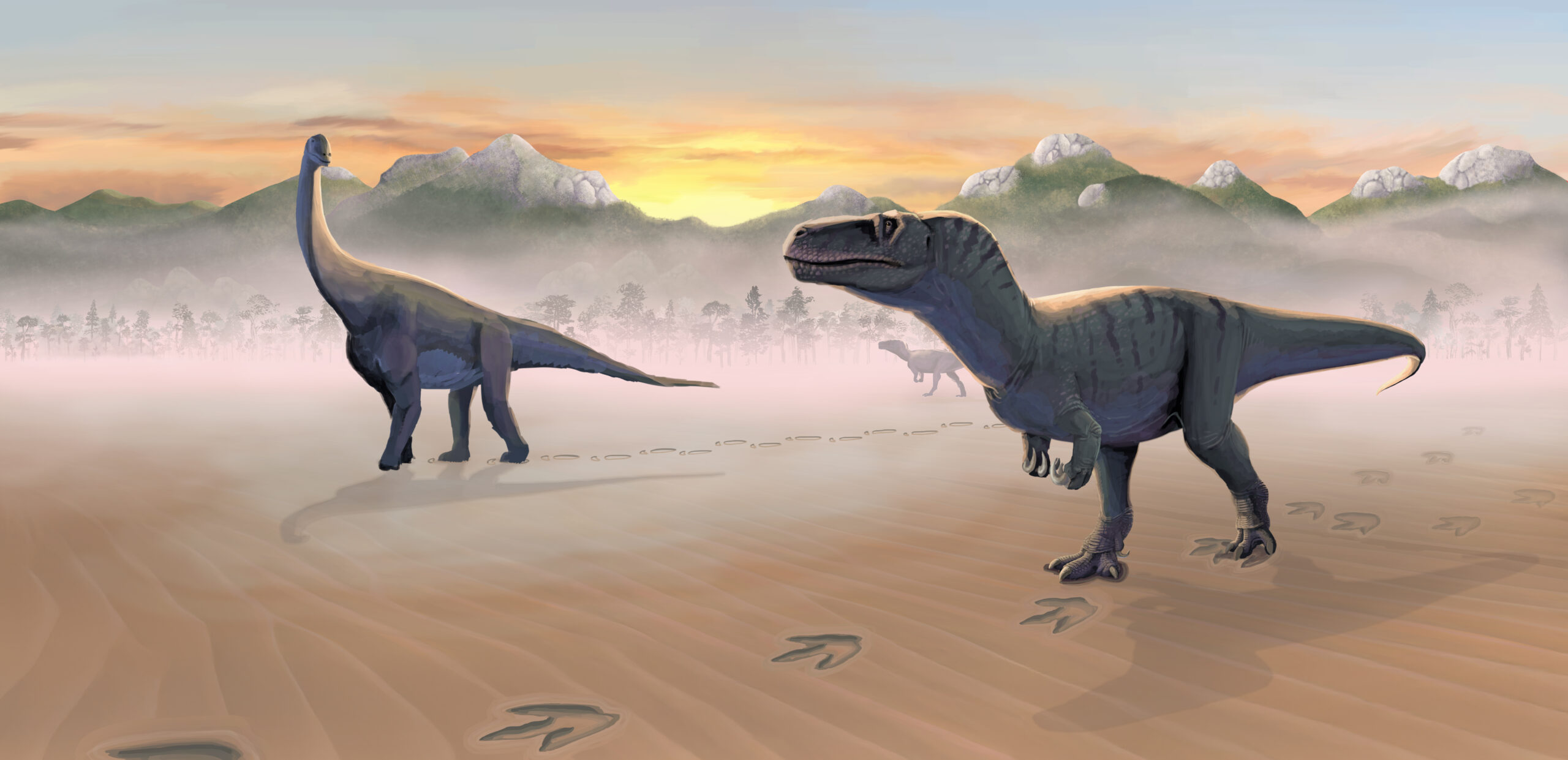Now Reading: 131 Fossilized Footprints Unearthed in Scotland Shed Light on Jurassic Era
-
01
131 Fossilized Footprints Unearthed in Scotland Shed Light on Jurassic Era
131 Fossilized Footprints Unearthed in Scotland Shed Light on Jurassic Era

Speedy Summary
- Dinosaurs in Scotland: 131 fossilized footprints discovered on the Isle of Skye by a team from the University of Edinburgh confirm that dinosaurs, including ancestors of tyrannosaurus rex, frequented the area about 167 million years ago during the Middle Jurassic era.
- Types of Footprints: The footprints include three-toed tracks likely from large theropods, such as a Megalosaurus, and round tracks linked to sauropods like Brontosaurus.
- Environmental Insights: The discovery suggests dinosaurs preferred subtropical lagoonal environments over mudflats and provides clues about their behaviors in these habitats. Footprint paths show leisurely movement with no apparent interaction between species.
- Research Methods: Aerial footage captured by drones facilitated the creation of 3D models to map dinosaur pathways. This method may enhance future research into Scotland’s Jurassic history.
- Documentary Released: A documentary accompanying this research highlights paleontological methods and showcases how digital reconstructions helped scientists visualize new perspectives on dinosaur activities.
Read More at Discover Magazine.
Indian opinion Analysis
This discovery is notable for understanding global paleontology and connects evolutionary findings to broader geographic areas – underscoring how diverse ecosystems supported early life during Earth’s prehistoric eras. While unrelated to India directly, lessons from advanced drone-led imaging technologies used here could inspire improvements in archaeological or geological explorations within India’s fossil-rich regions like Gujarat’s Dinosaur Park or Rajasthan’s Jaisalmer formations.
Moreover, insights into habitat preferences might have parallels with findings in India’s sub-Himalayan strata where ancient environments were conducive to similar reptilian diversification. As India continues expanding scientific programs around fossils through interdisciplinary technologies (e.g., AI-driven modeling and mapping), breakthroughs like this can serve as inspiration for collaborative efforts across borders in studying life on Earth during its formative epochs.
Read More at Discover Magazine.




























